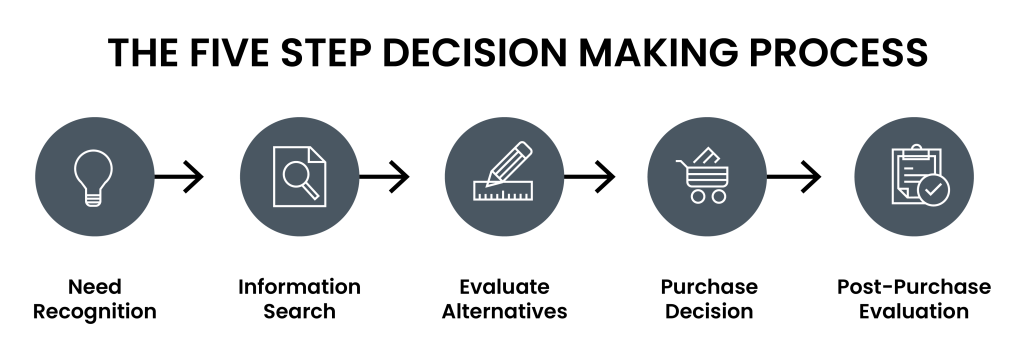Disappointed in your conversions from paid advertising? It may be that you’ve skipped some fundamentals when it comes to considering your buyer decision-making process. This blog explores why you need to remember your marketing fundamentals if you want to enjoy more paid advertising conversions.
It’s been over a decade since my first CIM course, and still, the fundamentals stand the test of time. This blog will dissect the five-step decision-making process in context, relevant for all lead acquisition paths but with paid advertising in mind.

1. Need Recognition
Need recognition is the beginning of the buying process, and this is where targetted advertising can quickly come into its own. Once you know who is likely to NEED your product, you can build an audience and begin delivering ads to them. But, if you do not consider the rest of the decision-making process beyond setting up your ad campaign, it will fall short; you’ll likely be disappointed in your ad performance and will lose faith in gaining conversions from paid advertising.
In short, conversions from paid advertising are not just a result of powerful visuals and sharp ad copy.
2. Information Search
And this is the first hurdle that people fall at. And not just when it comes to expecting conversions from paid advertising without considering content in the equation.
When a prospect has come from an ad, what do you think they are looking for? Your ad has spiked their interest enough for them to click, but are they converting? 81% of buyers generally research before bringing in a vendor (source) – so just because they’ve landed on their site doesn’t make them a sure thing.
Generally, your prospect will have a problem that needs to be fixed. How can you prove to them that you’re the right business for the job, or your product fits the bill?
Here are some ideas of content that you may wish to consider to satisfy your prospective clients/customers in their information search.
- Proof – Case Studies, White Papers, Client Testimonials.
- Service Offering – Clarity about what you can offer
- Examples – Portfolio, Gallery, Visuals
- Expertise – Blogs, Articles, Accreditations, Team Bios
- Value Alignment – CSR, Mission, Values
- Peer Adoption – Client Logos
If you do not have a good mix of the above types of information on your site, you will significantly reduce your chances of achieving paid advertising conversions.
Know your data & understand your audience.
- If you are currently running ads, do you know your conversion rate?
- For customer’s that you win, do you know what influenced their decision?
- Likewise, for customer’s that you don’t win?
- Most importantly, do you measure conversions on your site? If so, which acquisition path brings you the biggest wins?
Until you know where your leads are coming from, how can you scale up?
3. Evaluate Alternatives
This is where your potential customer weighs up the alternatives. Yes, sometimes this will be made on price. You know your margins; you know what’s possible. But what if a discount isn’t the only way to differentiate?
Proof of quality/expertise
When it comes to buying decisions both for B2B & B2C, the proof is in the pudding. As a buyer yourself, how many times have you filtered your product selection by average customer review? Yes, the price may be a factor, but no matter how cheap a product is, a 1* review does not speak of value.
93% of consumers say online reviews have an impact on their purchase decision. Dixa
For B2B businesses, the value of a good case study is three-fold:
1. Show your expertise
This is the perfect opportunity for you to show the depth of your understanding, your approach and your ability to deliver against specific customer challenges.
2. Present customer proof
A client testimonial framed by project specifics is a heady mix in the information search.
90% of buyers who read positive customer success content claimed that it influenced their purchasing decisions. Source
3. Attract organic traffic
Google’s EAT principle looks for content that shows Expertise, Authoritative and grows Trust with your customers. A well-written case study will tick these boxes, especially if it is written with your audience in mind. Use Google Search Console to see what terms your site is being found under – if you find a golden phrase that you hadn’t yet considered but have the perfect piece of content that fits the bill. Write it and pepper the search term (don’t just bung it in) in all the right places throughout for maximum discoverability.
Aligning Values
Emerging as more important than ever in the buyer decision-making process is a businesses values.
GWI Says: 68% of online consumers in the U.S. and UK would or might stop using a brand because of poor or misleading CSR. 84% say a poor environmental track record might cause them to stop buying from a brand. Nearly half are willing to pay a premium for socially-conscious or environmentally-friendly brands.
So, if you haven’t yet put your mission, values and commitment to CSR in writing, the time is now.
4. Purchase Decision
If you’ve ticked all of the above boxes, is there anything you can do in the purchase decision phase to swing things in your favour and increase your conversions from paid advertising?
Create a sense of urgency
e.g. now booking for xxxx often with B2B decisions, there is a definite delivery date in mind, and so stating lead times can bring focus to decision making.
Consider Payment Options & Terms
Flexible payment options can be a deal-breaker. This is often apparent during the information search phase in B2C transactions, with 0% finance, Klarna, Paypal etc., all being at the forefront of on-page information.
As a B2B business, can you offer any flexibility in your payment terms?
Encourage Questions
Love them or hate them, 79% of consumers prefer live chats because they offer instant responses. Live chat has the highest consumer satisfaction rate at 92%, But, be careful, it’s not as ‘simple’ as setting up AI to field the questions, with 70% of consumers prefer human agents to AI technologies. Source
Consider offering no-obligation calls and make it clear that you welcome any pre-sales questions that might arise. Make this as easy as possible with multiple calls to action points on the site.
Be helpful
Good customer service does not need to wait until the purchase decision has been made. Do you have free resources, styling tips, useful webinars, a valuable community that your prospective customers can take advantage of?
While recognising the importance of disability inclusion is growing, it is still not a top priority for businesses. Therefore, if you are a business that is tapping into this unmet need, you will be ahead of the game. If you market yourself and promote yourself in the right way, in the right places and to the right people, you can secure loyal, raving customers because you’re providing a service that in many other ways, does not exist.
Just Best Practice?
All of the above will help you secure sales/conversions from all traffic sources, not just ads. But the reality is ads can be used for a more immediate uptick in traffic, be aware that traffic doesn’t always = sales. One thing is certain if you consider the entire buyer decision-making process, you’ll likely enjoy better-qualified leads and an increased conversion rate.
Need a hand? This is what we do.
